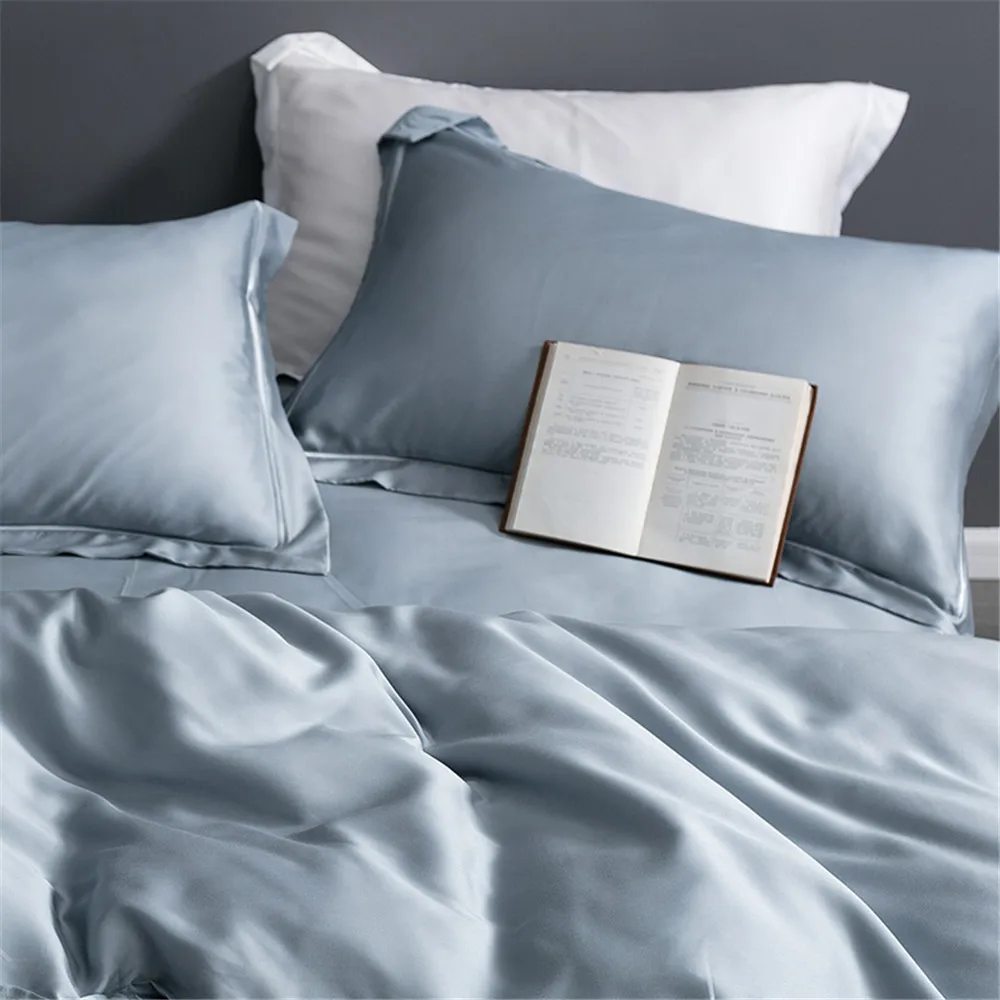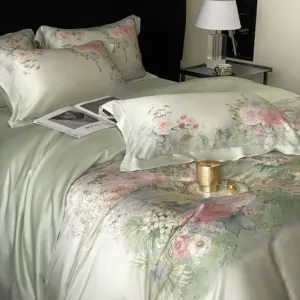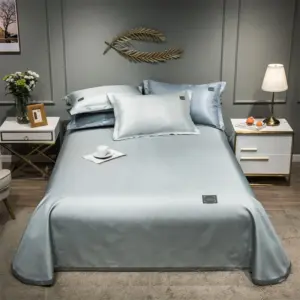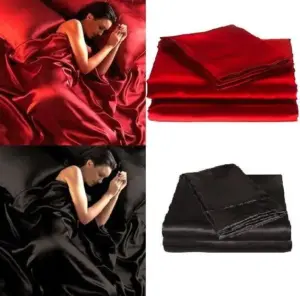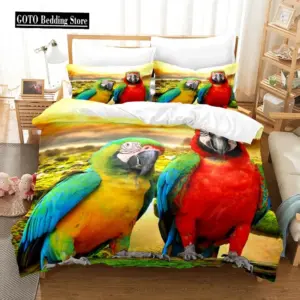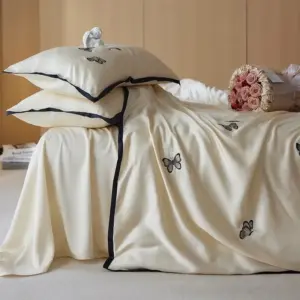Understanding the Appeal of Silk and Why Alternatives Matter
Traditional silk bedding has long been revered as the epitome of luxury in the bedroom. With its smooth texture, natural sheen, and temperature-regulating properties, silk has earned its reputation as a premium bedding material. However, many consumers are now seeking alternatives to conventional silk for various compelling reasons.
People look for silk alternatives due to:
- Cost concerns – traditional silk bedding often comes with a hefty price tag
- Ethical considerations – conventional silk production involves harvesting silk from silkworm cocoons
- Maintenance challenges – silk typically requires delicate hand washing and special care
- Specific performance needs – some sleepers need enhanced cooling or hypoallergenic properties
This comprehensive guide explores high-quality alternatives that deliver similar benefits to traditional silk while addressing these common concerns. By the end, you’ll understand the diverse range of options available and how they compare to traditional silk in various aspects.
Whether you’re motivated by ethical concerns, budget constraints, or specific sleep needs, today’s market offers impressive alternatives that don’t compromise on luxury or performance.
Key Considerations When Exploring Silk Alternatives
When evaluating alternatives to traditional silk bedding, several important factors deserve your attention:
Cost and Value
While initial purchase price matters, consider the long-term value proposition. Some alternatives may cost more upfront but offer superior durability, potentially providing better value over time. Others might deliver an excellent silk-like experience at a more accessible price point.
Ethical Production
Traditional sericulture (silk farming) involves harvesting silk from cocoons before the silkworm completes its lifecycle. If animal welfare concerns guide your purchasing decisions, many plant-based and synthetic alternatives offer cruelty-free options that align with ethical values.
Care Requirements
One challenge with traditional silk is its demanding maintenance needs. Many silk alternatives offer significantly easier care – including machine washability – without sacrificing comfort or appearance.
Performance Attributes
Consider what specific benefits you’re seeking:
* Temperature regulation and cooling properties
* Moisture-wicking capabilities
* Friction reduction for skin and hair
* Hypoallergenic properties for sensitive individuals
* Breathability and comfort in different seasons
Environmental Impact
Sustainability varies dramatically between different materials. Look for responsibly sourced raw materials, closed-loop manufacturing processes, biodegradability, and reduced water/energy consumption during production.
Plant-Based Lyocell (Eucalyptus) Bedding: The Premium Alternative
Lyocell derived from eucalyptus trees represents one of the most impressive silk alternatives available today. This innovative material combines luxury with sustainability in a way that rivals or even surpasses traditional silk in many aspects.
Lyocell is created from wood pulp (specifically eucalyptus in premium versions) using an advanced closed-loop manufacturing system. This process recycles water and solvents, dramatically reducing environmental impact compared to conventional textile production.
The resulting fabric offers remarkable qualities that make it a standout silk alternative:
- Exceptionally smooth surface with a subtle sheen similar to silk
- Superior cooling properties – often even more effective than silk for hot sleepers
- Outstanding moisture-wicking capability that helps maintain comfortable sleep
- Natural hypoallergenic and antibacterial properties
- Gentle on skin and hair, reducing friction and irritation
- Machine-washable durability that outlasts traditional silk
For those seeking vegan bedding options with premium characteristics, eucalyptus lyocell delivers an impressive combination of luxury feel and practical benefits. The material’s exceptional softness coupled with its temperature-regulating properties makes it particularly suitable for year-round comfort.
Sanctuary Soft’s collection of eucalyptus silk sheets showcases how this innovative material can transform your sleep experience while aligning with both sustainability and comfort priorities.
Bamboo-Derived Fabrics: Balancing Luxury and Sustainability
Bamboo-derived fabrics have gained tremendous popularity as silk alternatives due to their remarkable combination of comfort, performance, and environmental advantages. However, it’s important to distinguish between different bamboo fabric types.
Bamboo lyocell represents the most sustainable option, produced in a closed-loop system that minimizes chemical waste. Bamboo viscose/rayon, while still derived from bamboo, undergoes more chemical processing with greater environmental impact.
What makes bamboo fabrics exceptional silk alternatives:
- Distinctively soft “buttery” texture that many find even more comfortable than silk
- Excellent temperature regulation that keeps you cool in summer and warm in winter
- Superior moisture absorption (up to four times more than cotton)
- Natural resistance to dust mites, mold and bacterial growth
- Hypoallergenic properties ideal for sensitive skin
From an environmental perspective, bamboo’s sustainability credentials are impressive. The plant grows rapidly without pesticides or fertilizers, requires minimal water, and regenerates from its own root system without replanting.
For those seeking luxurious comfort with strong eco-credentials, bamboo silk sheets offer an excellent balance of performance and sustainability. The material’s exceptional softness makes it particularly appealing for those who find traditional silk appealing primarily for its smooth texture.
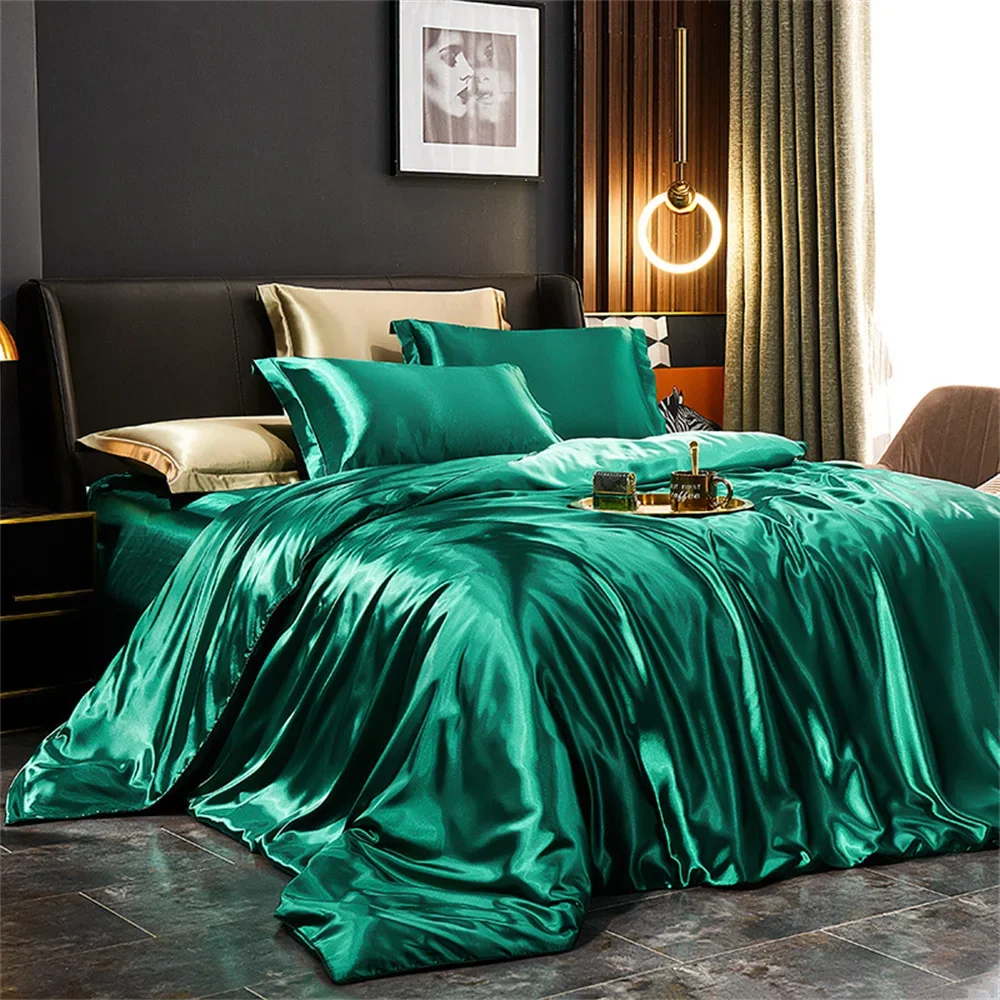
Cupro: The Little-Known Silk Imitator
Among silk alternatives, cupro remains relatively unknown despite offering one of the most convincing silk-like experiences. This regenerated cellulose fabric is created from cotton linter – the short fibers that adhere to cotton seeds after ginning – which would otherwise be discarded as waste.
What makes cupro special as a silk alternative:
- Remarkably similar drape and movement to natural silk
- Smooth, cool-to-the-touch surface that mimics silk’s distinctive feel
- Excellent breathability and moisture-wicking properties
- Natural temperature regulation similar to silk
- Hypoallergenic qualities suitable for sensitive skin
- Machine washable – significantly easier care than traditional silk
From a sustainability perspective, cupro represents creative upcycling of textile industry waste. By transforming a byproduct into a premium fabric, cupro offers an environmentally thoughtful alternative to traditional silk.
Despite its impressive qualities, cupro remains less widely available than other alternatives. When found, it’s often blended with other fibers to enhance certain properties. The material’s closest resemblance to silk’s distinctive movement and drape makes it particularly appealing for those who appreciate silk’s flowing quality.
Cotton Sateen: The Accessible Luxury Option
Cotton sateen represents one of the most accessible and widely available silk alternatives. The term “sateen” refers not to the material itself but to the weaving technique that creates a smooth, lustrous surface reminiscent of silk.
In sateen weaving, long cotton fibers are arranged so more threads appear on the fabric surface, creating a smoother feel and subtle sheen similar to silk but with cotton’s natural properties.
Benefits of cotton sateen as a silk alternative:
- Significantly more affordable than silk and most premium alternatives
- Exceptional durability – properly made sateen bedding can last many years
- Natural breathability with moderate temperature regulation
- Simple care requirements – machine washable without special treatment
- Broad availability in different thread counts and quality levels
- Reduced environmental impact when choosing organic cotton options
Cotton sateen does have some limitations compared to silk. It doesn’t offer the same protein structure that benefits skin and hair, and its cooling properties, while good, don’t quite match silk or premium alternatives like eucalyptus lyocell.
For budget-conscious shoppers seeking a silk-like aesthetic and reasonable comfort performance, cotton sateen offers excellent value. The material’s combination of affordability, durability and easy maintenance makes it particularly practical for everyday use.
Peace Silk: The Ethical Compromise
For those unwilling to compromise on having genuine silk but concerned about traditional silk production ethics, peace silk (also called ahimsa silk) offers a thoughtful middle ground. Unlike conventional silk harvesting, peace silk production allows the silkworm to complete its lifecycle and emerge naturally from the cocoon.
Key aspects of peace silk:
- Authentic silk composition with identical protein structure to traditional silk
- Non-violent harvesting that allows silkworms to complete metamorphosis
- Slightly different texture than conventional silk – less uniform with more texture
- Identical skin and hair benefits to traditional silk
- Similar temperature regulation and moisture-wicking properties
- Typically higher cost than conventional silk due to lower yield and labor-intensive process
Peace silk production yields less silk per cocoon and requires more processing to clean fibers after the moth emerges, explaining its premium pricing. However, for those seeking genuine silk’s benefits while aligning with eco-friendly values, peace silk represents a meaningful compromise.
Availability remains more limited than conventional silk, but as interest in ethical textiles grows, peace silk is becoming increasingly accessible through specialty retailers and ethical bedding brands.
Other Notable Silk Alternatives
Beyond the primary alternatives already discussed, several other materials deserve consideration when seeking silk-like qualities:
Modal/Viscose/Rayon
These semi-synthetic cellulose fibers offer excellent draping and softness similar to silk. Modal, particularly from sustainable producers like Lenzing, provides impressive softness with lower environmental impact than generic rayon. These materials excel at moisture absorption but may not match silk’s temperature regulation.
Ramie
This natural plant fiber derived from nettles offers excellent breathability and strength. While somewhat stiff alone, when blended with softer fibers, ramie creates durable fabrics with good moisture-wicking properties. Less common in bedding but gaining interest for its sustainability.
Polyester Satin
This budget-friendly option mimics silk’s appearance but offers significantly different performance. While affordable and widely available, polyester satin lacks breathability and can create static and overheating issues. Best considered when appearance matters more than performance benefits.
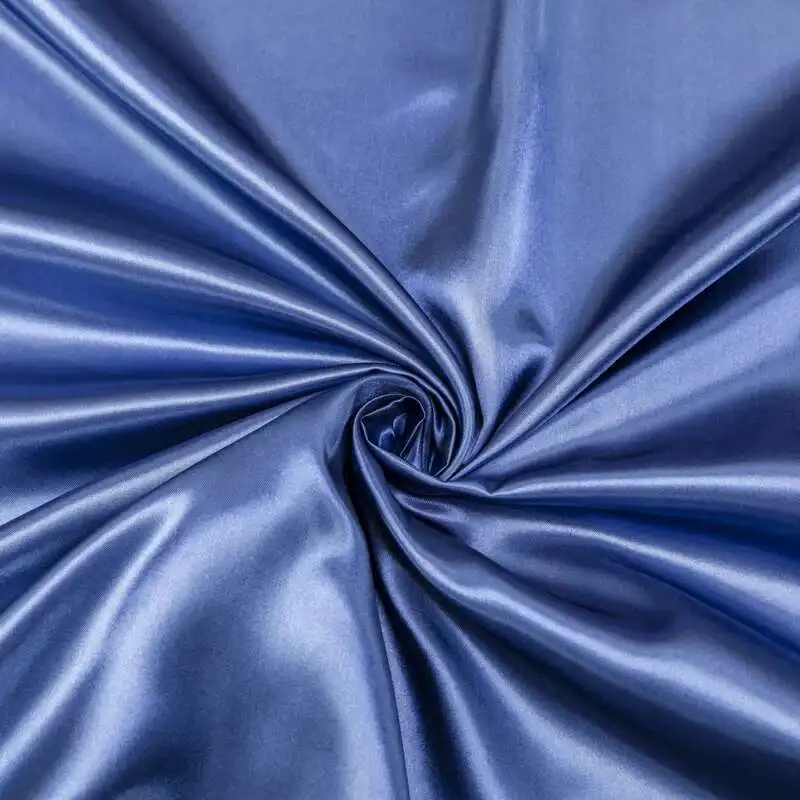
Emerging Innovations
Innovative alternatives continue developing, including pineapple-based fabrics (Piñatex), banana fiber textiles, and other plant-derived options. While currently less common in bedding applications, these materials show promise for combining sustainability with performance.
Comparative Analysis: How Alternatives Stack Up Against Silk
When evaluating silk alternatives, understanding how they compare across key factors helps identify the best option for your specific needs:
| Material | Feel & Texture | Temperature Regulation | Moisture Management | Hypoallergenic | Hair/Skin Benefits | Durability | Care | Vegan | Environmental Impact | Relative Cost |
|---|---|---|---|---|---|---|---|---|---|---|
| Traditional Silk | Smooth, lustrous | Excellent | Good | Moderate | Excellent | Moderate | Delicate | No | Moderate | High |
| Eucalyptus Lyocell | Very smooth, slight sheen | Excellent | Excellent | Excellent | Very good | Good | Easy | Yes | Excellent | High-Medium |
| Bamboo | Ultra soft, less sheen | Excellent | Excellent | Excellent | Good | Moderate | Easy | Yes | Good-Moderate | Medium |
| Cupro | Very similar to silk | Very good | Good | Very good | Good | Moderate | Easy | Yes | Good | High-Medium |
| Cotton Sateen | Smooth, subtle luster | Good | Moderate | Good | Moderate | Excellent | Very easy | Yes | Moderate | Low-Medium |
| Peace Silk | Similar to silk, more texture | Excellent | Good | Moderate | Excellent | Moderate | Delicate | Mostly | Good | Very high |
| Polyester Satin | Shiny, less breathable | Poor | Poor | Poor | Poor | Variable | Very easy | Yes | Poor | Very low |
This comparative analysis shows that no single alternative perfectly replicates all silk properties, but various options excel in different aspects. Your ideal choice depends on which characteristics matter most for your sleep comfort and values.
Finding Your Perfect Silk Alternative Based on Key Priorities
Selecting the best silk alternative depends largely on your personal priorities. Here’s how to match alternatives to your specific needs:
Budget-Conscious Shoppers
- Best Choice: Cotton sateen offers the most affordable option with reasonable silk-like properties
- Runner-Up: Bamboo blends provide better performance at a slightly higher price point
Ethical and Vegan Concerns
- Best Choice: Eucalyptus lyocell from certified sustainable sources
- Runners-Up: Bamboo lyocell or cupro
- Compromise Option: For those seeking real silk properties with ethical production, cruelty-free peace silk
Hot Sleepers Needing Cooling
- Best Choice: Eucalyptus lyocell offers superior cooling and moisture management
- Runner-Up: Bamboo provides excellent temperature regulation
Sensitive Skin and Allergies
- Best Choice: Eucalyptus lyocell with its natural hypoallergenic properties
- Runner-Up: Bamboo with antibacterial qualities
Hair and Skin Benefits
- Best Choice: Peace silk offers identical benefits to traditional silk
- Runner-Up: Lyocell provides similar friction reduction with easier care
Eucalyptus Silk Bedding Sets, Eucalyptus Silk Sheets
Price range: $360.24 through $393.60 Select options This product has multiple variants. The options may be chosen on the product page- Price range: $267.82 through $306.55 Select options This product has multiple variants. The options may be chosen on the product page
Bamboo Silk Sheets, Cooling Silk Sheets
Price range: $130.76 through $177.80 Select options This product has multiple variants. The options may be chosen on the product pageBamboo Silk Sheets, Queen Size Silk Fitted Sheet
Price range: $230.24 through $297.88 Select options This product has multiple variants. The options may be chosen on the product page- 100% Bamboo Fiber Parrot Duvet Cover Set – Queen King Twin Size Tropical Bedding for Comfort & StylePrice range: $241.95 through $380.95 Select options This product has multiple variants. The options may be chosen on the product page
Bamboo Silk Bedding Sets, Bamboo Silk Sheets, King Size Silk Pillowcases, Queen Size Silk Pillowcases
Price range: $376.20 through $402.27 Select options This product has multiple variants. The options may be chosen on the product page
Explore our complete collection of vegan silk bedding to find the perfect balance of luxury and ethics for your sleep sanctuary.
Understanding Certifications and Sustainability Claims
When shopping for silk alternatives, various certifications help verify sustainability and safety claims:
Key Certifications to Recognize:
- OEKO-TEX Standard 100: Certifies textiles are free from harmful substances
- Global Organic Textile Standard (GOTS): Ensures organic status of textiles with environmental and social criteria
- FSC (Forest Stewardship Council): Verifies wood pulp for lyocell/tencel comes from responsibly managed forests
- Lenzing Certification: Guarantees authentic Tencel™ or Modal fibers made in closed-loop processes
Beyond certifications, evaluating eco-conscious bedding options requires looking at:
- Water consumption during fiber production and processing
- Chemical usage and waste management practices
- Energy sources used during manufacturing
- Biodegradability of the final product
- Working conditions throughout the supply chain
Be wary of vague terms like “eco-friendly” without specific certifications or details. Genuine sustainable producers typically provide transparent information about their sourcing and manufacturing processes.
Essential Care Tips for Silk Alternatives
Proper care extends the life of your bedding investment. Here are specific guidelines for different silk alternatives:
Eucalyptus/Lyocell Care
- Machine wash in cold or lukewarm water on gentle cycle
- Use mild, eco-friendly detergent without bleach or fabric softeners
- Tumble dry on low heat or line dry
- Remove promptly from dryer to prevent wrinkles
Bamboo Fabric Care
- Wash in cold water on gentle cycle
- Avoid bleach and fabric softeners
- Tumble dry on low heat or line dry
- Expect some natural shrinkage initially
Cupro Care
- Machine wash cold on gentle cycle
- Use mild detergent
- Line dry recommended but can tumble dry on low
- Iron on low heat if needed
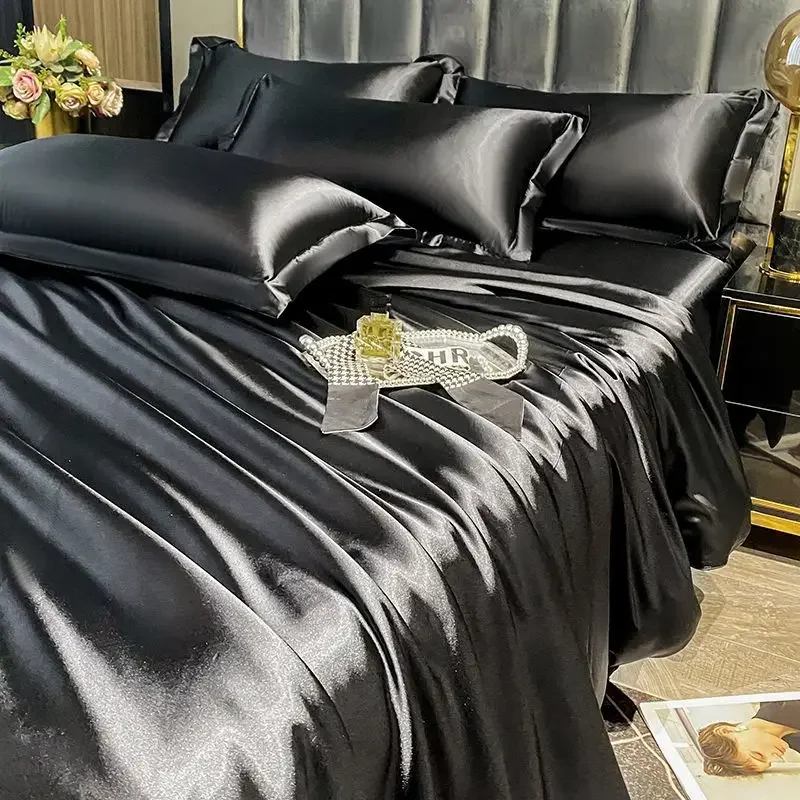
Cotton Sateen Care
- Machine wash in warm or cold water
- Can handle slightly higher heat than other alternatives
- Tumble dry medium to low
- Wrinkle-resistant but may benefit from light ironing
Peace Silk Care
- Hand wash recommended with silk-specific detergent
- Cold water only
- Never wring or twist
- Lay flat to dry away from direct sunlight
- Store carefully to prevent snags
Frequently Asked Questions About Silk Alternatives
Is bamboo truly ‘vegan silk’?
Yes, bamboo-derived fabrics are plant-based and involve no animal products, making them truly vegan while offering many silk-like properties in terms of softness and temperature regulation.
What’s the difference between satin and silk?
Silk is a natural protein fiber, while satin refers to a weaving technique that creates a smooth, glossy surface. Satin can be made from silk, polyester, or other fibers.
Do silk alternatives feel exactly like silk?
No alternative perfectly replicates all silk properties, but some come remarkably close. Cupro most closely mimics silk’s drape, while vegan silk alternatives like lyocell and bamboo offer similar or superior softness with different performance characteristics.
Are these alternatives good for curly hair?
Yes, especially eucalyptus lyocell and bamboo fabrics, which reduce friction similarly to silk. Many curly-haired individuals report excellent results with these alternatives.
Can I machine wash all silk alternatives?
Most plant-based alternatives are machine washable on gentle cycles, unlike traditional silk. The exceptions are peace silk and some delicate cupro blends, which may require hand washing.
Do silk alternatives help with acne or sensitive skin?
Many alternatives offer hypoallergenic and antibacterial properties that can benefit sensitive skin. Lyocell and bamboo are particularly noted for these qualities.
What About Synthetic Silk Imitations? The Truth About Polyester Satin
Polyester satin represents the most common and affordable synthetic silk alternative. Unlike the plant-based options discussed earlier, polyester is a petroleum-derived synthetic fiber woven in a satin pattern to mimic silk’s appearance.
Benefits of Polyester Satin:
- Significantly lower cost than any other alternative
- Wide availability in various colors and styles
- Extremely easy care – machine washable and durable
- Maintains its shiny appearance with minimal care
- Resists wrinkles and maintains shape well
Limitations to Consider:
- Poor breathability can lead to overheating and night sweats
- Static electricity issues, particularly in dry environments
- Limited moisture-wicking capabilities
- Lacks the skin and hair benefits of natural alternatives
- Environmental concerns regarding microplastic shedding and non-biodegradability
While polyester satin makes silk’s aesthetic accessible at a budget-friendly price point, it sacrifices most of the performance benefits that make silk desirable for sleep. It may be appropriate for decorative purposes or occasional use, but those seeking comfort and performance benefits should consider natural or semi-synthetic alternatives when possible.
Beyond Bedding: Other Applications for Silk Alternatives
The benefits of silk alternatives extend beyond complete bedding sets into other sleep and lifestyle products:
Pillowcases
Silk alternative pillowcases represent the most popular entry point into these materials. A single pillowcase delivers significant hair and skin benefits without the full investment of sheet sets. Bamboo and lyocell options are particularly popular for reducing hair breakage and facial creasing.
Sleep Masks
The gentle touch of silk alternatives makes them excellent for sleep masks that rest directly on delicate eye areas. Lyocell and cupro versions offer the smoothness needed to protect sensitive skin while blocking light effectively.
Loungewear
The temperature-regulating properties that make these materials excellent for bedding also translate to comfortable loungewear. Bamboo-derived fabrics particularly excel in this application, offering exceptional softness against skin with natural stretch.
Home Décor
The beautiful drape of silk alternatives makes them suitable for decorative applications like curtains, throw pillows, and table linens. The easier care requirements of these materials compared to silk makes them practical for everyday use while maintaining an elegant appearance.
Each alternative brings unique strengths to different applications, allowing you to select the perfect material for your specific needs while enjoying similar benefits to traditional silk with fewer drawbacks.

